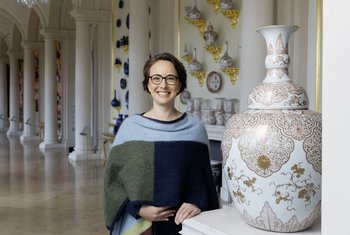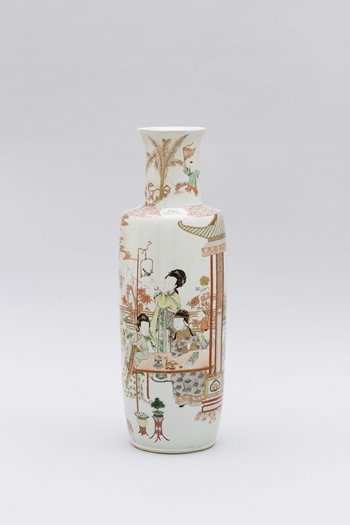quote
Born from the fascination of August the Strong for the Far East and fuelled by the foundation of the Meissen Porcelain Manufactory, the Porcelain Collection in Dresden is one of a kind in the world.
Born from the fascination of August the Strong for the Far East and fuelled by the foundation of the Meissen Porcelain Manufactory, the Porcelain Collection in Dresden is one of a kind in the world.

It was the "maladie de porcelaine", August the Strong’s obsession with “white gold”, that made his legendary porcelain collection the finest and most extensive in Europe. In 1717, the king’s love of porcelain went so far that he made an unconventional deal with Frederick William I of Prussia: he swapped six hundred of his soldiers for 151 pieces of blue-and-white Chinese porcelain, among them thirty large vases.
Other items found their way to the Saxon court via merchants at the Leipzig fair or came directly from Holland, where East Asian porcelain arrived at the time.
It was also during August’s reign, in 1708, that Johann Friedrich Böttger became the first in Europe to discover how to produce porcelain. Two years later, August the Strong founded the first European porcelain manufactory in Dresden, which was soon moved to Meissen, principally to ensure the secret recipe remained just that.
Today the Porzellansammlung remains the best place to gain an overview of the Meissen manufactory's spectacular achievements from its first century of operation, with works ranging from the famous chinoiseries to the royal dinner services to monumental groups of figures. Both East Asian and Saxon porcelain were to be displayed side by side in the Japanisches Palais (Japanese Palace), a residence acquired and converted for use as a "porcelain palace" – yet, after the king’s death in 1733, the plans were not fulfilled. Shown crowded and cramped in the Johanneum in the nineteenth century, the objects underwhelmed visitors.

During the Second World War, the collection was evacuated to safety in palaces and mine-workings close by, meaning that the lion’s share surviving the destruction of Dresden in 1945. That year, the Red Army took the majority of the objects to the Soviet Union as trophies of war. After Stalin’s death in 1953, the Soviet government decided to return ninety percent of the pieces to museums in East Germany. In 1958, the works were returned to Dresden, where the public has been able to enjoy them in the magnificent galleries of the Zwinger since 1962.